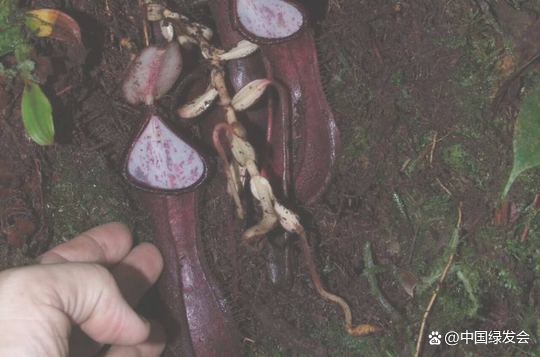Looking for the old flavor of tomato
Author:Environmental magazine Time:2022.07.20
"Environmental Economy" magazine reporter Chen Wan
Tomato is not only a fruit for many people, but also an extremely precious childhood memory.
I went to the supermarket to buy with my family on the weekend. Looking at the bright and full -fruit tomato on the shelves, I couldn't help but sigh that the current tomato does not have "the taste of childhood".
When I was a child, the tomato I ate was sandy. It was full and rich, soft and hard, and took a bite, thin skin, less seeds and less seeds, sand softly, sweet but not astringent, unique flavor, people who eaten for a long time or not for a long time. greasy.
Nowadays, although tomatoes are large and red in color, they bite hard, cutting no sand, no juice, a sip of taste, and even the taste of tomato. Whether it is eaten raw, cold, or stir -fry, it is difficult to evoke the taste of childhood memory.

Do you ask yourself, do my mouth turmoil, or did the tomato lose the "original flavor"? It was found that it was not an illusion that it turned out to be difficult to eat, but it was really difficult to eat.
The change of tomato flavor has been scientifically certified. Chinese scientist Huang Sanwen's team published in "SCIINCE" "Tomato -flavored improved roadmap" to taste more than 100 types of tomatoes through tasting experiments, and analyzed 33 substances that affect the flavor of tomatoes, including 29 of which 29 Volatility.
Then Huang Sanwen's team analyzed the flavor material content of 398 modern commercial species, heirs, and wild varieties from all over the world, and conducted gene sequencing and biological information experiments. The genetic site was lost, and the content of 13 volatile substances affecting the flavor of the flavor was significantly reduced in the common tomato varieties on the shelves, and eventually the tomato taste was reduced.
At the same time, Huang Sanwen's team stated that in the process of breeding more and more red, the loss of some gene sites has reduced the degree of tomato sugar.
We like tomatoes, and we love its sweet and sour taste. The sweet acid taste of tomatoes corresponds to the appropriate sweetness, acidity, and the "sugar acid ratio" of the two. Generally speaking, when the color of tomato reaches 20%of the complete mature color, the "sugar acid ratio" is in the best position, and the "sugar acid ratio" is sweet, otherwise it will be sour.
The Shanghai Academy of Agricultural Sciences once determined that 31 varieties of pink and fruit tomatoes found that modern varieties and traditional varieties have reduced 26.12%and 17.67%of the "sugar acid ratio" and "soluble sugar content"; red fruit of 20 varieties of 20 varieties, respectively. Tomatoes are determined. Compared with traditional varieties, the "sugar acid ratio" and "soluble sugar content" have decreased by 22.17%and 11.60%, respectively.
"Sugar -acid ratio" and sugar content are declining, which is why the current tomato is obviously not sweet, and even becomes sour.
The decline in the content of sugar content and specific volatile compounds has lost "no childhood taste".
I can't help wondering, tomatoes are all the result of artificial selection. It stands to reason that breeding should make crops more and more in line with people's expectations. Why is it not as good as before?
In fact, the disappearance of tomato "original flavor" seems to be the failure of the biological breeding technology of contemporary society, but it is actually the result of the game between breeding, planting and the market.
Tomatoes can be divided into soft fruits and hard fruit types according to fruit hardness. Soft fruit type tomatoes such as hair powder and good powder series, thin skin and rich flavor, but not storage, transportation causes high losses; while hard fruit type tomatoes such as Jinpeng, European Shield, Pink Baili and other varieties, high hardness is high , More resistant to storage and higher economic benefits.
Under the requirements of transport resistance, many people miss the "hourly sand tomato", because they are not resistant to storage and transportation and shelf periods, and they are gradually eliminated under the model of modern agricultural regional production.
Hard fruit type tomatoes have the advantages of "high value", "high yield", "suitable for transportation and storage and transportation". In order to improve economic benefits, fruit farmers are more willing to grow a kind of tomato varieties with hard flesh and thick peel. Therefore, breeders are more inclined to choose tomatoes that are resistant to storage, large heads, and beautiful appearances. These aspects of breeding will not only make tomatoes taste better, but may even conflict with deliciousness.
For example, the common tomato varieties in supermarkets carry a gene mutching named SLGLK2. The SLGLK2 gene can promote the production and distribution of chloroplasts in fruit development. However, mutations make the color of tomato fruits very uniform, so the selected recipients are fancy.
As a fruit and vegetable, with taste and flavor as the criterion, the tomatoes on the market are disappointing now; but as a product, the appearance, transportation and storage capabilities are also a qualified product.
The market is understandable. For most fruit farmers, there seems to be no reason to abandon modern tomato varieties. So, can the sweet and full tomato be back when you were a kid?
The answer is, it is possible.
In recent years, the breeding experts in the academic community have been trying to "save tomatoes". The tomato variety that has lost its taste will also be expected to restore the sweetness of the old days. It is expected that delicious tomatoes will enter people's dining table as soon as possible.
- END -
Government Affairs "satisfied" supervision "zero distance" Nanjing government service theme supervision monthly activity was launched

Dragon Tiger News (Reporter Xu Wangqiang Correspondent Ning Zhengfu) Is the govern...
Another new species was discovered in Indonesia: a pig cage grass with underground prey as

Scientists have found a new species on Borneo Island, North Cagon, Indonesia, Nepe...